#artiodactyls
Text
Uncharismatic Fact of the Day
Got milk? The blue whale sure does! Blue whale calves can drink up to 200 L (52 gal) of milk a day, every day for 6-8 months. Due to the milk's high fat content (35-50% fat), these calves gain weight extremely fast-- a single nursing calf can put on 10 lbs an hour!
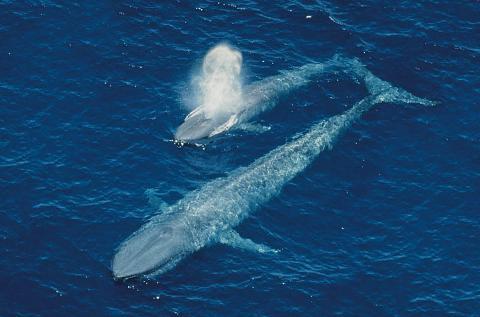
(Image: A mother blue whale (Balaenoptera musculus) and her calf by Whale Watch Western Australia)
#blue whale#Artiodactyla#Balaenopteridae#Rorquals#baleen whales#Cetaceans#whales#artiodactyls#mammals#uncharismatic facts
98 notes
·
View notes
Text
Animal of the Day!
Andrewsarchus (Andrewsarchus mongoliensis)
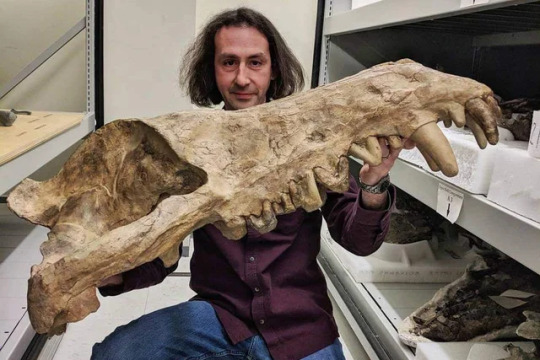
(Photo from American Museum of Natural History)
Conservation Status- Extinct
Habitat- Mongolia
Estimated Size (Weight/Length)- 1 tonne; 5 m
Diet- Large mammals; Carrion
Time Period- Late Eocene
Cool Facts- The Andrewsarchus may be one of the most mysterious animals of the late Eocene. With only one skull found in 1923, it has been estimated that Andrewsarchus is the largest terrestrial carnivore in history. Being the size of a horse and as fast as one, this hoofed predator could take down the other megafauna that roamed ancient Mongolia with ease. Andrewsarchus sports enlarged secondary canines that most likely would have been deadly with a crushing bite force thanks to its elongated snout. Comparing Andrewsarchus to other mesonychids, paleontologists have assumed that they had relatively short legs for their long body and massive head.
Rating- 12/10 (Just wait until we find a complete one.)
#Animal of the day#Animals#Mammals#Mesonychids#Artiodactyls#Thursday#January 12#Andrewsarchus#biology#science#conservation#the more you know#Paleoweek#Paleolithic#Prehistoric#Megafauna#Extinct Animals#Paleontology
304 notes
·
View notes
Text
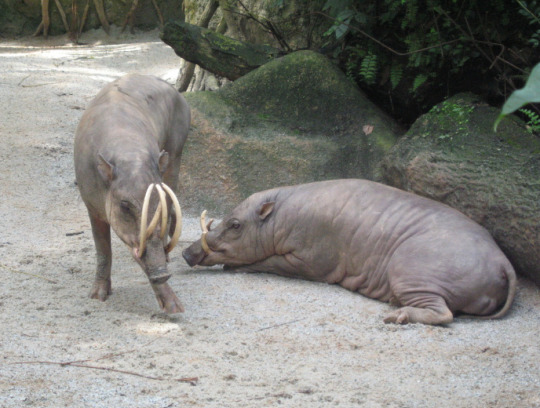
Sulawesi Babirusa (Babyrousa celebensis)
Family: Pig Family (Suidae)
IUCN Conservation Status: Vulnerable
Native to the islands of Sulawesi, Pulau Muna, Butung and Lembeh in Indonesia, the Sulawesi Babirusa is a small, slender, almost entirely hairless species of wild pig best known for the four enormous curled tusks seen in adult males (which are derived from highly elongated canine teeth,) although adult females also possess a single pair of smaller, less elaborate tusks protruding from their lower jaws. The tusks of a male babirusa are used to intimidate rival males and impress potential mates (with females generally preferring males with larger, curlier tusks,) although despite their impressive appearance they are brittle and unsuited for fighting; males generally resolve conflicts through intimidation alone, but if a fight does occur they instead rear up onto their hind legs and strike at each other with their front hooves, similar to a clumsier version of the boxing behaviour of hares. Typically inhabiting dense forests or canebrakes (forest-like areas dominated by tall bamboo of the genus Arundinaria,) members of this species tend to remain near permanent bodies of water such as rivers and large ponds and feed mainly on fallen fruit, although like other pig species they are unspecialised omnivores and will also readily consume leaves, roots and small invertebrates. Female Sulawesi Babirusas live in groups of around 15 adults accompanied by their young, while males are generally solitary outside of the mating season (between January and August). Unlike most pigs females of this species produce only small litters of 1-2 piglets each year, with young being born tuskless and covered in a coat of short, reddish-brown hair.
--------------------------------------------------------------------------
Image Source: https://www.inaturalist.org/taxa/74099-Babyrousa-celebensis
#Sulawesi Babirusa#babirusa#pig#pigs#suidae#zoology#biology#mammalogy#animal#animals#wildlife#Asian wildlife#Indonesian wildlife#ungulates#ungulate#even-toed ungulate#even-toed ungulates#artiodactyla#artiodactyls#wild pig#wild pigs#mammal#mammals
32 notes
·
View notes
Text
youtube
4 notes
·
View notes
Text

No explanation for why this other than that Climacocerus's are my favorite guys ever and I wanted to draw one<3 anyway ladder horns farigiraf REAL
#hoof draws#pokemon#sv spoilers#<-i keep drawing this guy b/c i love girafarig a lot and i'm STOKED that it got an evo heheem#<3#neway there are a lot of cool extinct species in the artiodactyl group#i should draw sawsbuck with as that mushroom horns deer guy too
2K notes
·
View notes
Text
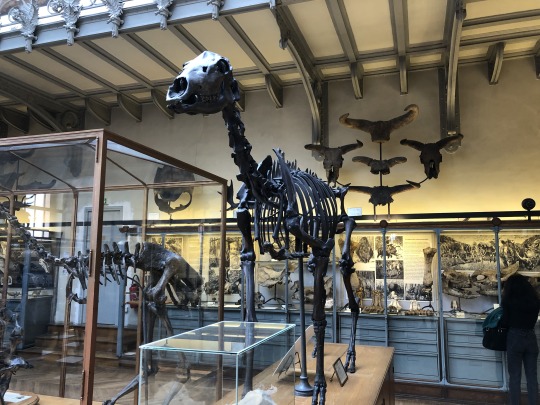


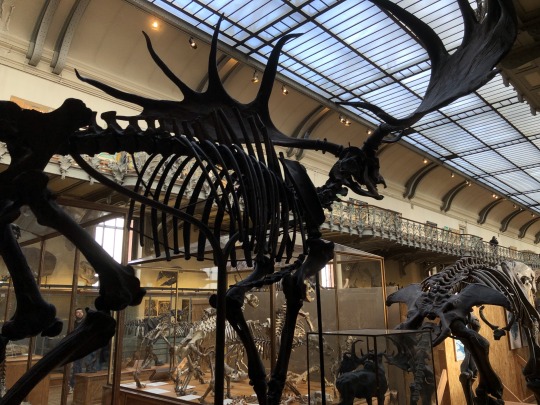
Megaloceros! They have a female and a male at opposite sides of the gallery.
#megaloceros#deer#artiodactyl#mammal#quaternary#i encountered the female first and did not immediately recognise it#without the antlers#palaeoblr
498 notes
·
View notes
Text
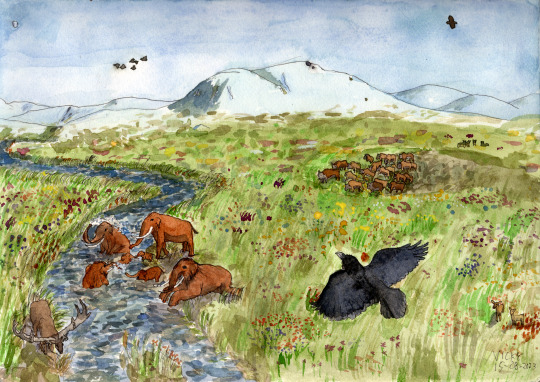
350000 years ago, just beyond the western edge of the icy Schwarzwald, spring has come to the mammoth steppe. A raven flies over a group of steppe mammoths enjoying a cold bath in the Oos river, while a Megaloceros grazes on some choice plants growing on the riverbanks. With the harsh ice age winter in retreat for a few months, a flock of greylag geese migrates north, a buzzard hunts, and a small pack of wolves observe a herd of steppe bison and some roe deer.
#steppe mammoth#raven#megaloceros#steppe bison#roe deer#wolf#buzzard#greylag goose#mammoth#proboscid#mammal#corvid#passerine#bird#deer#artiodactyl#bovid#canine#carnivore#quaternary#pleistocene#paleoart#my art#ice age#spring#mammoth steppe#schwarzwald#palaeoblr
141 notes
·
View notes
Text
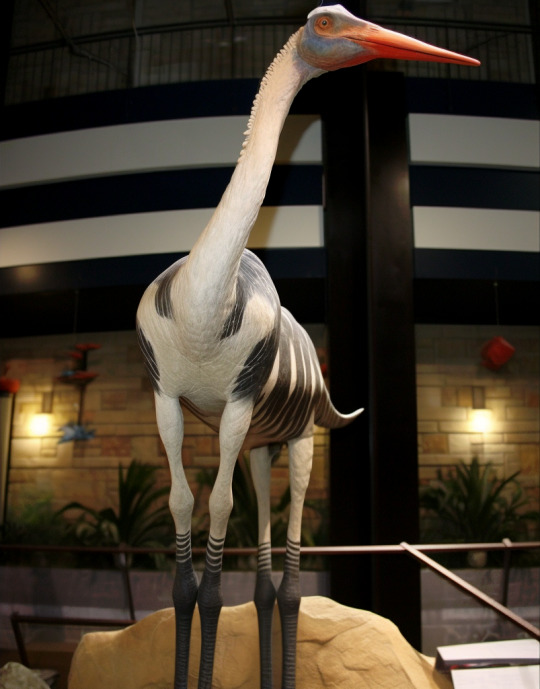
Quetzalokapi model, life size. Vinyl figures and plush toys available in the gift shop.
Midjourney 5.2
#deceptive ai#quetzalcoatlus#okapi#azhdarchid x giraffid hybrid#pterosaur x artiodactyl hybrid#extrasolar and alt-timeline natural history museums
16 notes
·
View notes
Text
Day 6 of hermit-a-day, a very lazy doc doodle because, uh, head empty only silly :< head tilt goat remains

Go ahead and laugh! yeah, he's a funny guy :)
#hermitaday#docm77#all i could think about while drawing this was 'am i really going to draw two satyrs in a row?' (not that it's possible to tell)#but it ain't my fault they're both so horned-artiodactyl coded lol. the deer and the goat. the goat and the deer
20 notes
·
View notes
Video
2011-06-28_Chamois_9279.jpg par Bruno Pesenti
#Artiodactyla#Artiodactyles#Bovidae#Bovidés#Chamois#Mammalia#Mammals#Mammifères#Rupicapra rupicapra#flickr
0 notes
Link
1 note
·
View note
Text

one of my fursonas :)
I really gotta make up to date references for all my fursonas some time. some of them I haven’t drawn at all yet and are just ideas.. I probably have too many fursonas but whatever, HOW am I supposed to decide if I wanna be a rat or a caribou or a lynx or a kitty cat or a glacier bear or-
[image description: a cartoony digital drawing of a light brown caribou walking to the left. her eyes are obscured by the long fur on her head and she has a slight smile on her face. she wears one dandelion blossom behind her ear and one on her tail. she has an ivory-colored heart marking on her upper leg, a somewhat small pair of ivory-colored antlers and a pair of somewhat small wings. end of image description]
#fursona#feral fursona#caribou#reindeer#rangifer tarandus#rangifer#cervid#cervidae#artiodactyl#artiodactyla#mammal#mammalia#my art#digital art#art
0 notes
Text
some other taxonomic facts for you to get mad at evolution for, instead of "birds are dinosaurs"
"Insects are Crustaceans" (Pancrustacea)
"Dolphins are Hoofed Mammals" (Artiodactyl)
"Mushrooms are closer to Animals than they are to Plants" (Opisthokont)
"Hyenas are Cat-like" (Feliformia)
"Herpetology is a LYING BASTARD since Amphibians are equally close to Mammals and Reptiles, and there's no reason it should be included like that. if anything, Herpetology should be a parent science of Ornithology, since birds are reptiles. why the fuck are toads here??" (Amniota, Sauria)
"really, we're all just fish" (Sarcopterygii)
11K notes
·
View notes
Text
Young Asian woman Morning masturbation
hollywood casino columbus ohio poker
Busty Lesbians Donna Bell & Chessie Kay Fuck in a Luxury Flat
Horny asian twink jerking off and cumming
Naruto - Tsunade 3D Hentai POV
Pissing in bathroom mother in law
Myanmar lady boy
Skype show
Swingeing gf Karina is cheating on her husband
Familystrokes Fucking My Hot Step Mom For Her Birthday
#hook-bill#theologus#waterpot#EUV#Damar#artiodactyl#fouled#scorpionfly#Melanion#Akeyla#well-desired#red-figured#wide-rimmed#lekvar#winter-blooming#footstalk#mopboards#assecuration#schizopodal#decapper
0 notes
Text
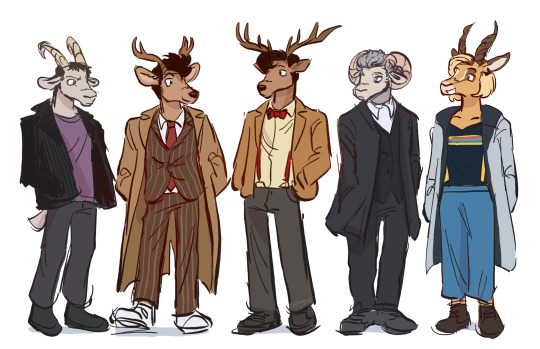

why are all doctors artiodactyls and why am I correct

im sane and normal
#furry artist joing a fandom and of course first thing he does is draw furry versions of characters#bro joins a platform and digs a grave for himself right away#doctor who#i guess#its kind of cringe isnt it#dw fanart#9th doctor#10th doctor#11th doctor#12th doctor#13th doctor#northernfire art#ninth doctor#tenth doctor#eleventh doctor#twelfth doctor#thirteenth doctor#new who#dr who#dw art#doctor who fanart
2K notes
·
View notes
Note
How are centaurs classified scientifically? They seem to technically be artiodactyls, but they'd have to be mammals and I can't tell if they're mammals or some other type of synapsid.
Those are all words describing taxonomic groups of animals that evolved on earth. Even though I sometimes compare aliens like centaurs to phylogenetic groups of earth animals, it's not a literal statement. When I say centaurs are mammal-like, what I mean is that they share some physiological traits we associate with mammals: endothermy, vivparity, feeding infant young with specialized glands, parental care, fuzzy, endoskeletal, vertebral spine. But they also have plenty of traits not associated with mammals: feather-like integument, unidirectional respiratory system, a central cognitive brain, a nervous cord the runs ventral to their vertebrae, lack of a post-anal tail, spinerettes, non-Terran biochemistry, etc, etc.
When talking about genuine taxonomical classes for aliens, you have to build an entirely new tree of life, from the bottom up. Centaurs do not even belong to the same domain of life as us. Physiological terms can be used to compare us to them, but like, they're not even eukaryotes.
#runaway to the stars#jaytext#speculative biology#fun fact is that this means centaurs are not technically ''animals'' in a taxonomic sense because they do not belong to the clade holozoa#They are beasts though. That one is not a science word :)
532 notes
·
View notes